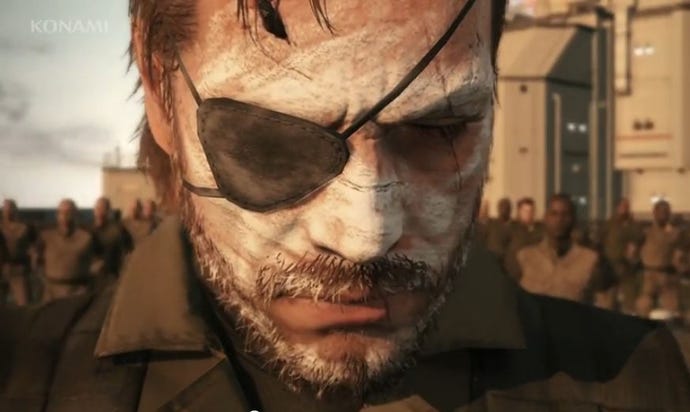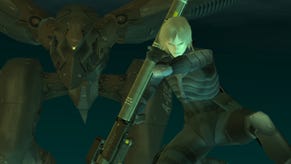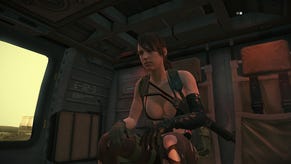Metal Gear Solid 5: The Phantom Pain is Kojima at his best
Hideo Kojima’s magnum opus brings proof that mega-budget games remain necessary and impossible to ignore.
"It is classy beyond the reach of almost anyone else in this business. Nobody directs videogame sequences as meticulously as Kojima."
Even with its celebrated sandbox elements that tease various routes through complex mission environments, this step into fully-fledged open world territory is a bold one for the Metal Gear Solid series. The chosen backdrop of Afghanistan presents such an unforgiving open world at that.
While Grand Theft Auto V and Batman: Arkham Knight hand us the keys to spectacular cities via larger-than-life avatars, Metal Gear Solid V: The Phantom Pain trusts its battle-torn hero to an arid landscape from where to approach bleak military bases. It’s a set up that feels deliciously stark in contrast to the more luxurious blockbusters that also include Rockstar’s Read Dead Redemption.
Contrast was clearly the standout theme during a recent hands-on session with The Phantom Pain at Konami’s Windsor HQ. True to form, a very lengthy and magnificent prologue sets the scene for hero Solid Snake’s 1980s tour of duty. The interactive narrative sequence depicts Snake’s shocked emergence from a coma in a hospital bed, followed by a mindboggling escape from the facility aided by a ‘mystery’ accomplice (“Call me Ishmael”).
In the opinion of yours truly, this is right up there with the unveiling of Metal Gear Solid 2 at E3 2000. It is classy beyond the reach of almost anyone else in this business. There are grand gestures pointing to the kind of epic and uncanny boss battles that fans love to celebrate. Nobody directs videogame sequences as meticulously as Kojima, period.
Off the beaten track
After the showdown featuring an unstoppable Man on Fire and his diminutive psycho accomplice riding a winged horse ablaze, we join Snake and mentor Revolver ‘Shalashaska’ Ocelot on regular steeds patrolling the outskirts of Kabul. To cut a long preamble short, Snake has a mystery to solve and it’s guarded by the Russian military with numerous and varied outposts across the region. To kick things off, and by way of a tutorial mission, Snake infiltrates a very small occupied village in order to extract war buddy hostage Benedict ‘Kazuhira’ Miller.
Snake’s image-enhancing binoculars return from the Ground Zeroes demo, essential for highlighting the position of patrolling guards. This first mission is a very focused and condensed example of what to expect later on, taking place at dusk so that Snake has the cover of darkness on his side. There are power generators to disable, searchlights to dodge and soldiers that are relentless in their pursuit of anyone that encroaches on their soil. Once spotted, it’s very difficult to lose the heat owing to the small location and large number of guards protecting their high value target. You’re already thinking about how to make judicious use of Snake’s WU Silent tranquilizer pistol, right?
DIY Mother Base
"It allows for Indiana Jones moments where pure fantasy temporarily takes over the show, so that we embrace clichéd ancient-ruins and brooding skull-faced villains as though witnessing them for the first time."
Our brief taste of home improvement a la Snake was initially baffling... in a good way. Upon completion of the tutorial mission, with Miller safely extracted, Snake receives his first lesson in developing the Diamond Dogs’ Mother Base off-shore HQ. Located somewhere in the Seychelles, Mother Base is the primary launch pad for future missions (select others are initiated from an airborne command post). To aid these missions, new Diamond Dogs staffers are recruited, more or less, by kidnapping at every available opportunity from the field of operations. Unconscious new hires are attached to a Fulton Surface-to-Air Recovery System and hauled skyward with a scream.
Side Operations (Side Ops) can also lead to the capture of specialists that enable the establishment of new divisions, such as Intelligence, that can greatly improve Snake’s performance owing to prior knowledge. Its primary function, though, is R&D to bolster Snake’s arsenal of weapons and gadgets, and to improve the capabilities of the support units that include a helicopter gunship, Snake’s horse-mounted accessories and a darling rescue puppy nicknamed ‘DD’ (for Diamond Dog). Speaking of wildlife, Mother Base also houses an enclosure for larger animals that include grizzly bears – these don’t go down too easily unless heavily tranquilized and can even kill their captors. Snake also forages for medicinal plants with names like Wormwood and Golden Crescent to aid research.
Series re-runs
Part of the reason players are encouraged to pay so much attention to Mother Base is that it forms the centre of multiplayer versus modes later on. The stronger and better prepared you are, including familiarity with the layout, the more chance you have of defending against an attack. Meanwhile, the core purpose of Mother Base is as a springboard to self-contained missions old and new. As with Ground Zeroes, Snake’s performance is rated according to time spent, alarms raised, enemies killed, headshots landed, times hit, Perfect Stealth (no kills) and location-specific goals such as retrieving a secret weapon without it being fired. Replay Mission is not a new concept, but requirements in The Phantom Pain really point to the complexity of all possible approaches. Each mission is very proudly presented as though watching a TV drama episode, complete with beginning and end credits.
Broadly speaking, there are a handful of mission types that are kept fresh by the natural terrain and military constructs great and small. Whether sabotage, hostage extraction or assassination objective, perfectionists will have one eye on the Perfect Stealth bonus at all times. But if you’d rather enter a fire fight, the mechanics are better suited to shooting from cover and using tactical decoys such as C4 attached to gas canisters or vehicles. As compelling as the emergent behaviour is, owing to keen AI and authentic feel of the hardware, it’s the sci-fi sub-plot that makes The Phantom Pain special.
Splitting SKULLS
The prologue prepares you for out-of-the-ordinary exposition, but it’s still an arresting moment when Snake encounters The Mist Unit, aka ‘Skulls’ special forces. It’s the closest we’ll get to zombie mode in Metal Gear, watching these wraiths emerge from the deadly fog that heralds their arrival. Standard weaponry is no use against these ethereal, fast moving targets. The method Snake eventually employs to take them out, on Miller’s recommendation, is OTT but oh so satisfying.
And this is the key difference between Metal Gear and the many rivals that have stalked in its shadow since Metal Gear Solid on PlayStation in 1998. Kojima, in long term collaboration with artist Yoji Shinkawa, successfully incorporates Japanese anime-style anomalies into an otherwise serious commentary on the politics and casualties of war. It allows for Indiana Jones moments where pure fantasy temporarily takes over the show, so that we embrace clichéd ancient-ruins and brooding skull-faced villains as though witnessing them for the first time.
Just before Ocelot bids his farewell to Snake in the desert, he says with melodramatic conviction: "Go. Let the legend come back to life." And you can’t help but sense that shiver down your spine.
Metal Gear Solid V: The Phantom Pain is scheduled for September 1, coming to PlayStation 4, Xbox One and PC.













